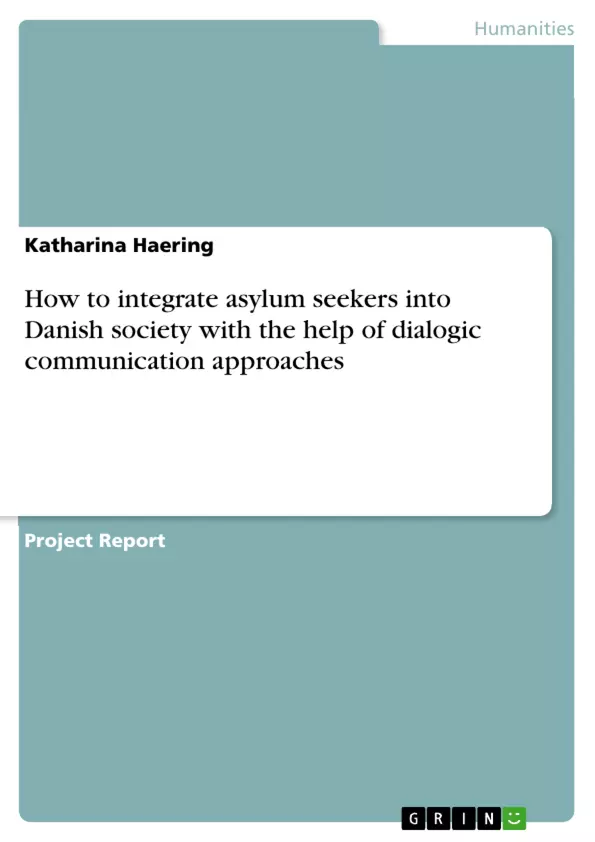Speaking about a problem as the situation of the asylum seekers is complex for manifold reasons as it is bounded with many different aspects regarding our current society. It concerns the political situation of our world and includes social and economic problems in many countries. Related with these problems is the anonymous and sometimes wrong way the media present the asylum seekers.
In this work, we are supposed not to analyse all problems related with the rights of asylum seekers, but we are going to focus on the perception of these people that the danish society has.
Inhaltsverzeichnis (Table of Contents)
- Introduction
- General problem description
- Asylum seekers in Denmark - The current situation
- Some statistical facts
- The Asylum Centres
- Reception Centre and Departure Centre Avnstrup
- Accommodation Centres
- The Woman Centre
- The special care centre - Kongelunden
- The Centre for Unaccompanied Minors - Gribskorv
- Application for Asylum
- Before an application for asylum is processed
- Processing an application for asylum
- Three procedures
- 1st case
- 2nd case
- 3rd case
- When an asylum seeker is rejected
- When an asylum seeker is granted a residence permit
- The first Problem
- Why a communication problem
- Our aim
- How to reach this aim
- Sub problem: Mental diseases because their life looses sense
- How to change this problem
- Sub problem: Asylum seekers are not able to create contact with the labour market
- How to solve this problem
- Current or previous projects
- Methodology
- Why a Dialogic Communication Campaign?
- Social Marketing
- The social marketing approach
- Project Plan
- CMM- approach
- Photovoice method and Open Gallery
- Net Activism: the Virtual Gallery.
- Shedd Practical approach of CMM-theory
- Weaknesses of the project
- Strong points of the project
Zielsetzung und Themenschwerpunkte (Objectives and Key Themes)
This work examines the perception of asylum seekers by Danish society and explores strategies to improve integration through dialogic communication approaches. The aim is to understand the challenges faced by asylum seekers and develop communication-based solutions to address these challenges.- The societal perception of asylum seekers as a threat
- The role of communication in shaping and changing societal attitudes
- The impact of immigration on the host society
- The challenges faced by asylum seekers in accessing the labour market and social services
- The need for a dialogic communication approach to facilitate integration
Zusammenfassung der Kapitel (Chapter Summaries)
The text begins by outlining the complex situation of asylum seekers in Denmark, highlighting the need for a deeper understanding of societal perceptions and potential solutions. The authors explore the socio-political context of asylum seeking in Denmark, including statistics and the specific challenges faced by asylum seekers in the country. The text examines the obstacles faced by asylum seekers in their quest for integration, including communication barriers, mental health challenges, and difficulties accessing the labor market. The authors propose a framework for addressing these challenges through a dialogic communication campaign, incorporating social marketing principles, project planning, and the CMM-approach. The text details the implementation of a Photovoice method and Open Gallery initiative, as well as the role of Net Activism in this campaign.Schlüsselwörter (Keywords)
Asylum seekers, Denmark, integration, dialogic communication, social marketing, CMM-approach, Photovoice, Net Activism, societal perception, communication barriers, mental health, labor market access.
Fin de l'extrait de 71 pages
- haut de page
- Citation du texte
- Bachelor of Arts Katharina Haering (Auteur), 2007, How to integrate asylum seekers into Danish society with the help of dialogic communication approaches, Munich, GRIN Verlag, https://www.grin.com/document/115452
Lire l'ebook



